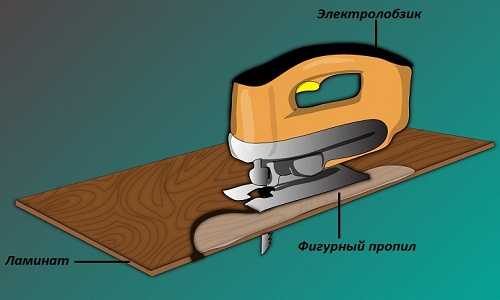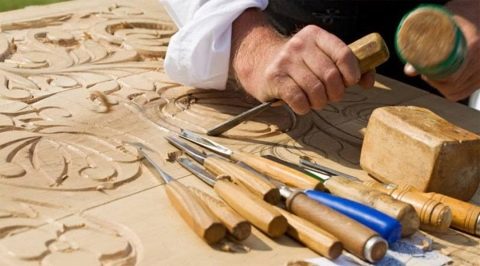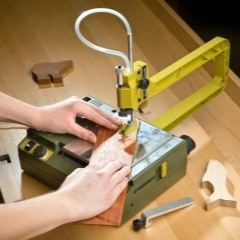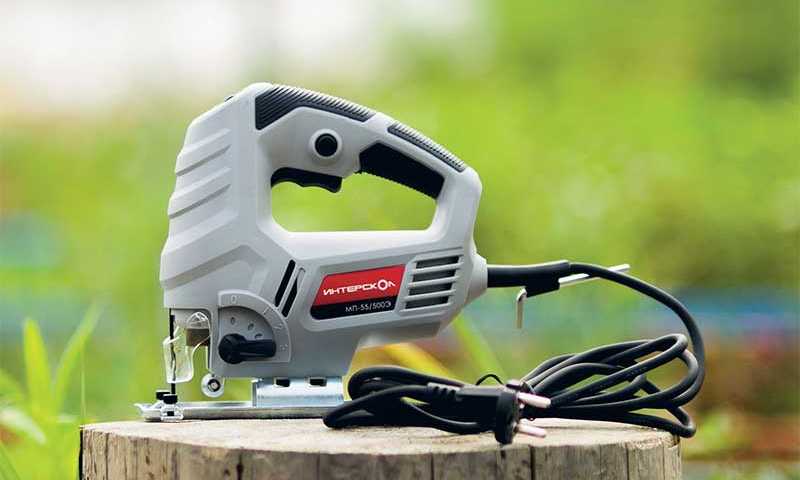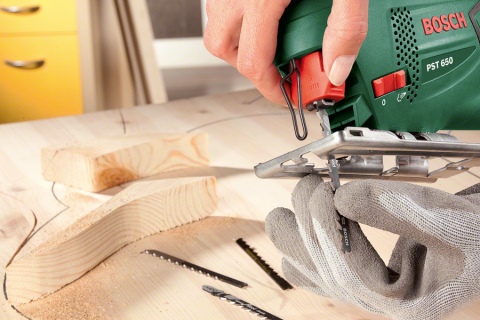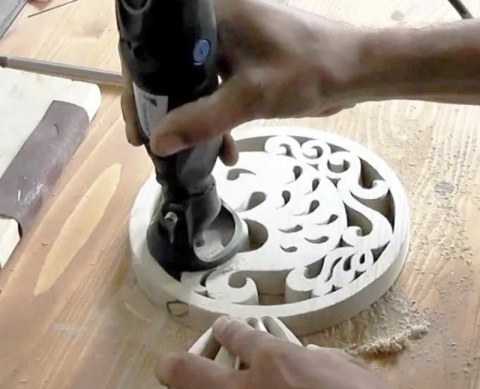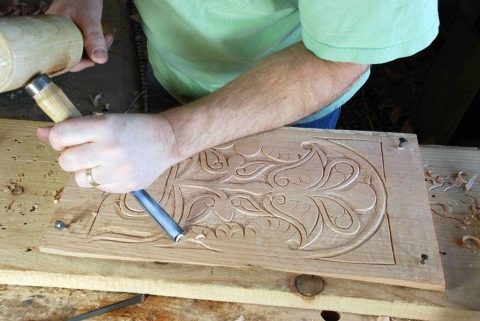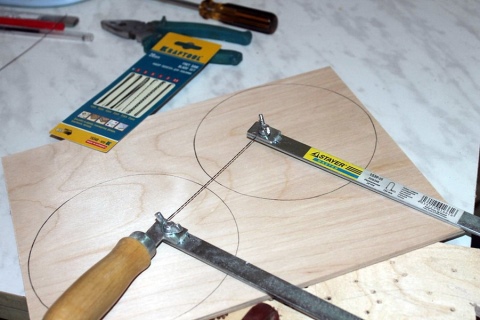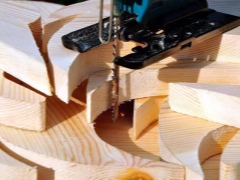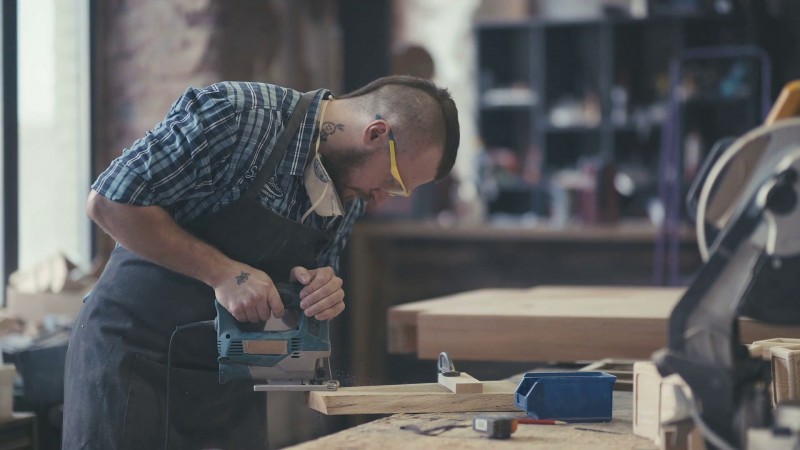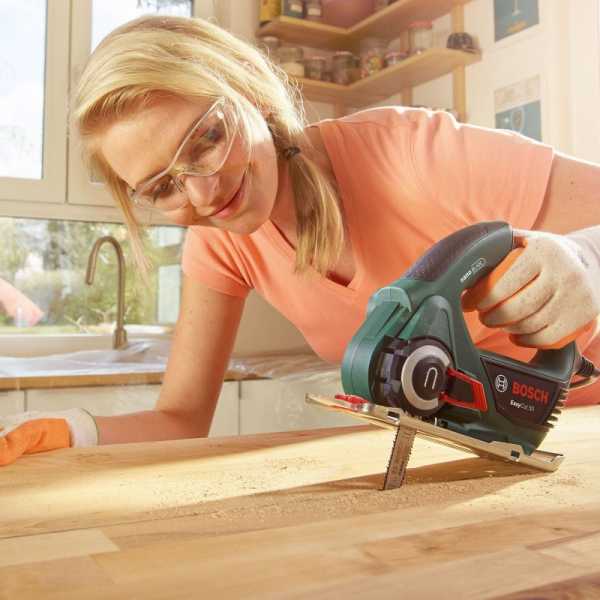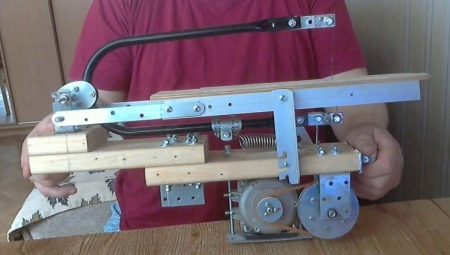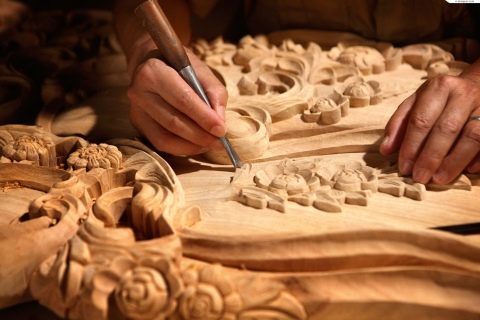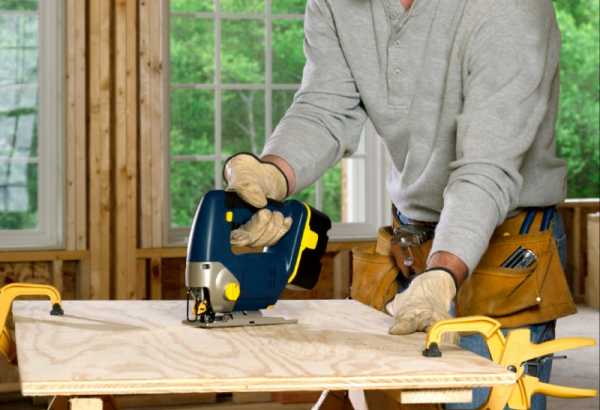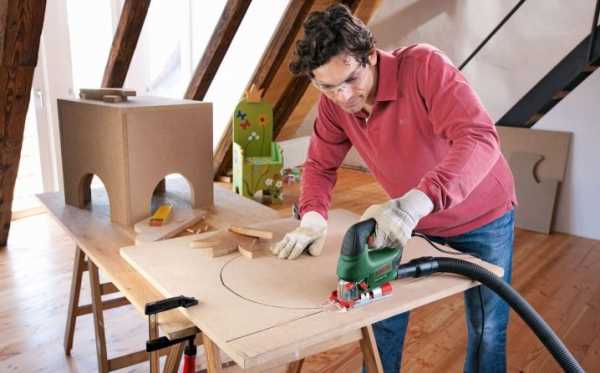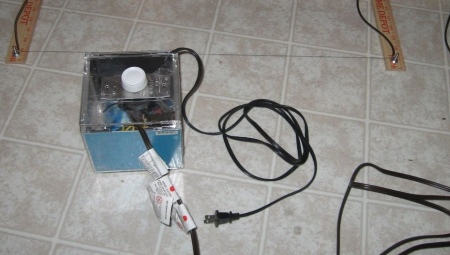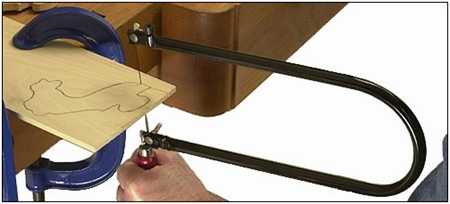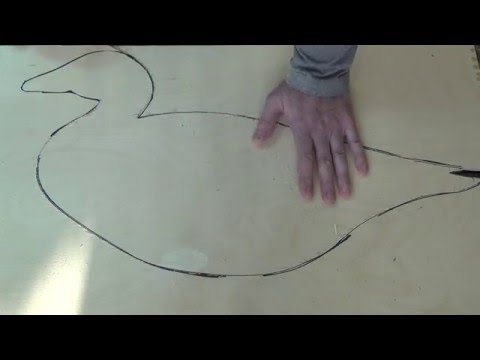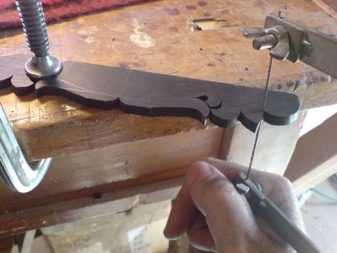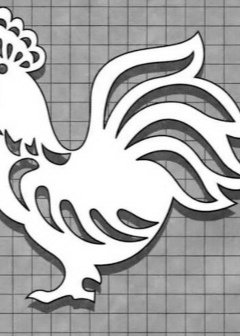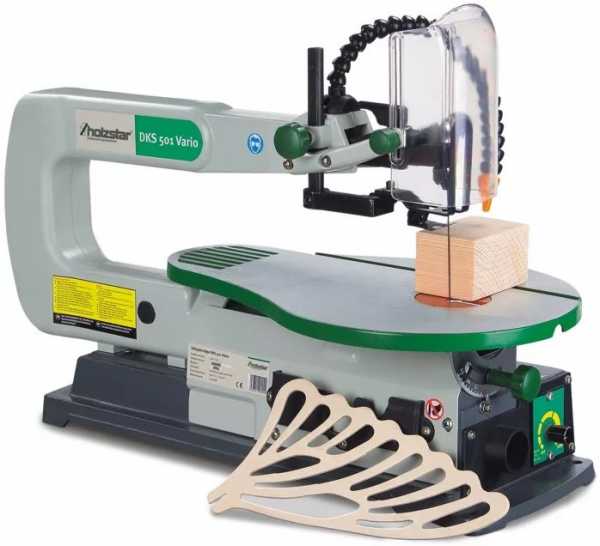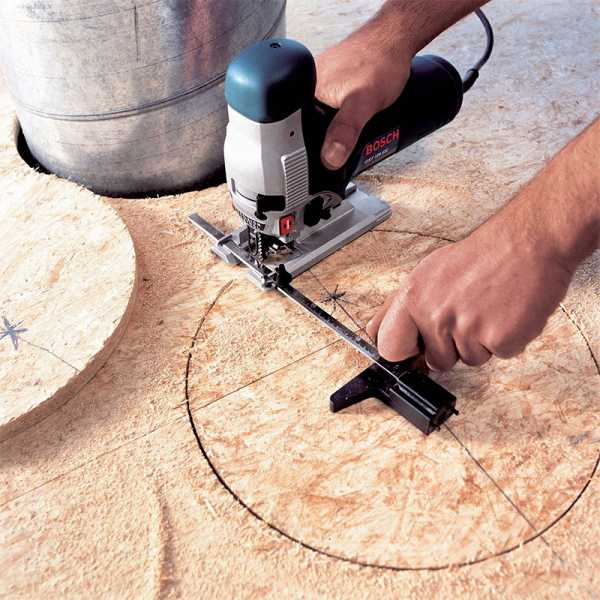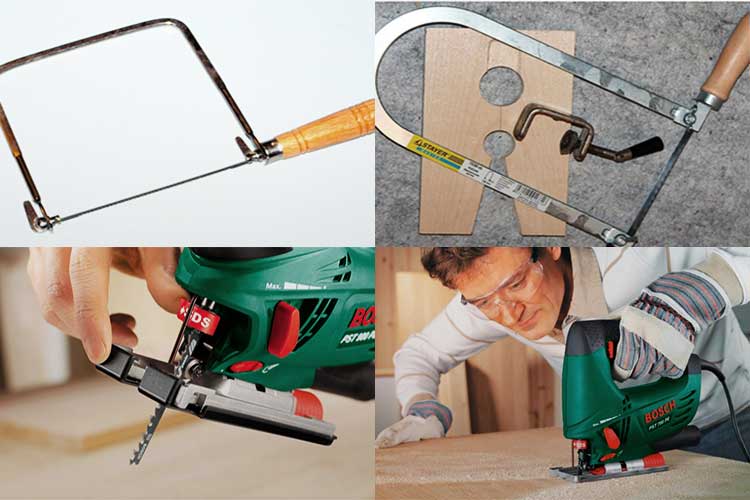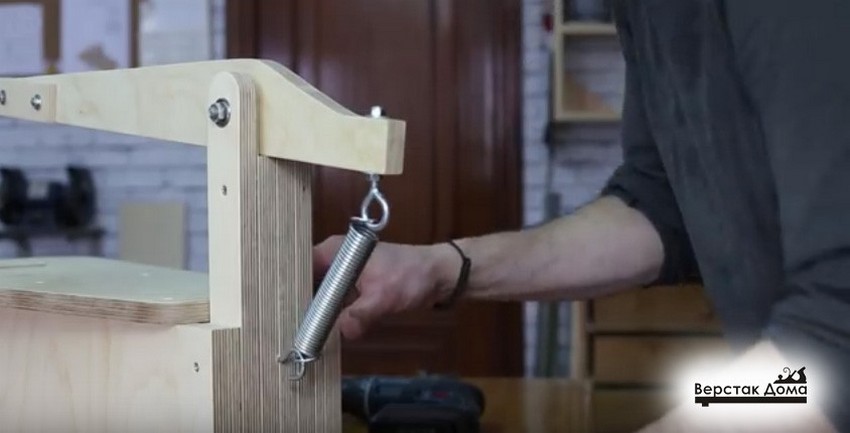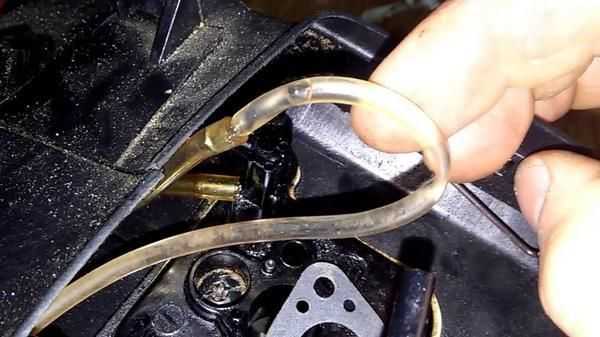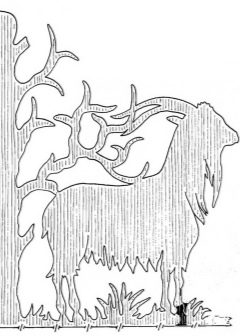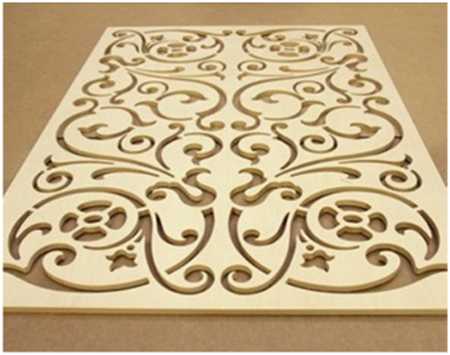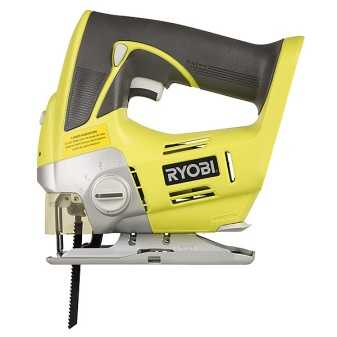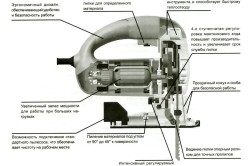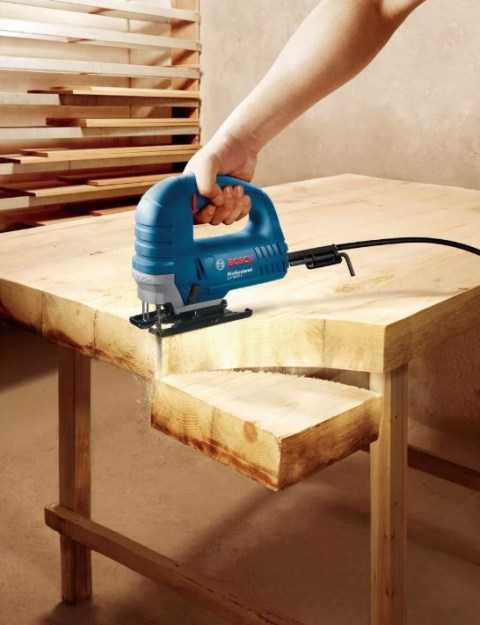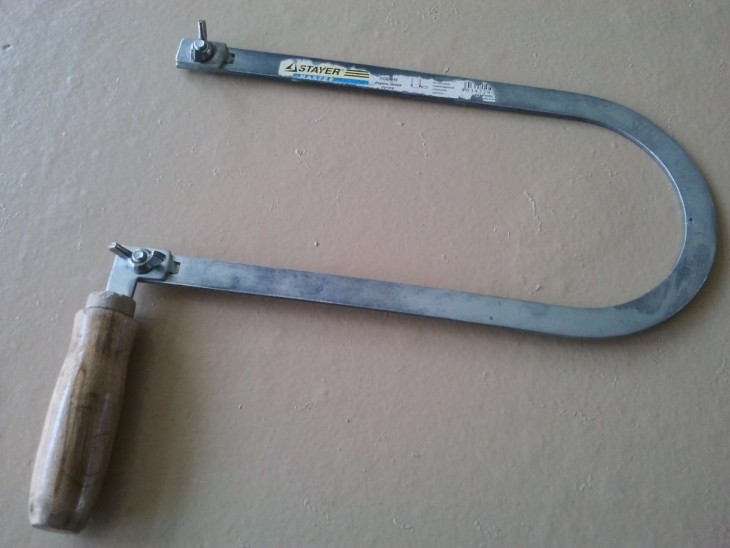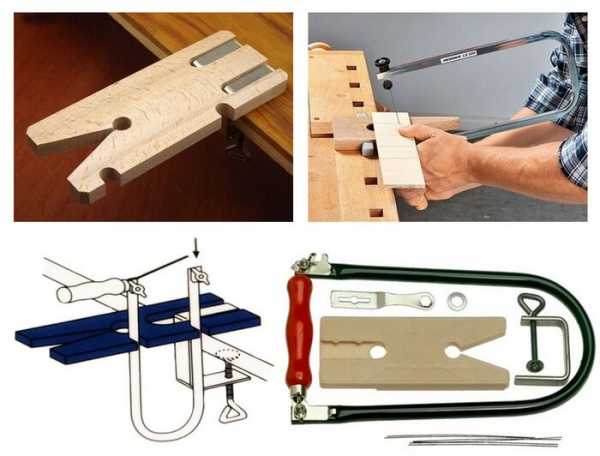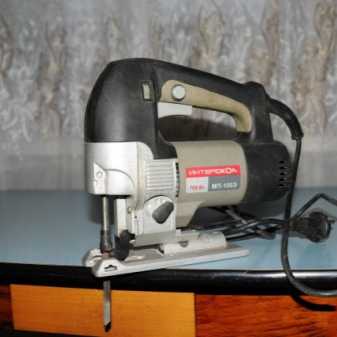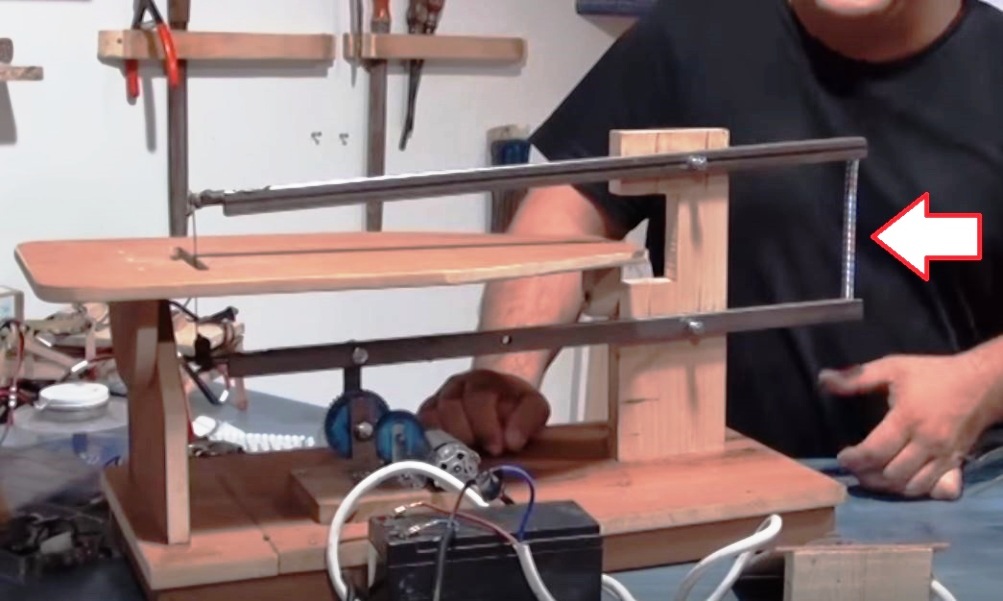How to cut with a jigsaw correctly and evenly?

- 16-04-2015
- 26
- 69
- What you need to know about working with a jigsaw?
- How to make a high precision cut?
Many people ask: how to cut with a jigsaw exactly? A similar question arises for almost everyone who did not previously have the skills to work with such a tool. A few useful secrets will help you master the jigsaw and learn how to cut any material evenly.
Jigsaw device diagram.
With a jigsaw, you can cut materials such as wood, tiles, metal and even plastic. This tool is a conventional electric saw.
The device can have an ordinary vertical or pendulum stroke, in which the jigsaw moves slightly forward when raised, thereby increasing the speed of work. A jigsaw in the household is simply irreplaceable, especially for those who like to craft with their own hands.
The scheme of cutting a circle with an electric jigsaw.
In order to cut an evenly wide surface, it is necessary to use a special carpenter's table, which is attached to the main table with clamps. In this case, cutting is much easier, since the tool remains in place, and the material to be cut moves towards it.
To make the cut on a wooden surface even, it is performed from the back side (necessarily across the fibers).
If, nevertheless, you need to cut wood along the grain, then use a special parallel stop, which is attached with one side to the tool, the other to the surface to be sawn. Do not let the tool overheat, take breaks from work, otherwise the service life of the jigsaw will be short. For the same reason, do not press hard on the tool, as this will cause overheating.
Types of saws for a jigsaw.
When working with tiles or metal, machine oil is used to lubricate the saw blade. When cutting metal, the cutting line is cooled with cold water. Do not neglect personal protective equipment, use goggles and rubber gloves. You need to cut the plastic with a jigsaw from the back side, then the cut will be even.
To cut a round hole, use a special circular cutter.
You will need:
- jigsaw;
- wood;
- clamps;
- guides;
- Ruler and pencil.
Accessories for working with a jigsaw.
In order to make a high-precision cut, it is not enough to know how to properly saw with a jigsaw. In addition, you need to secure the material to be cut well, and when working with a long blade, use a guide in the form of a flat rail. Prepare 2 clamps to fit the board and guide you are cutting.
The first step is to mark the board, measure the required distance on both sides with a ruler, make notes, then connect them in such a way that a cut line is obtained.
If you need to make a curved cut, then draw it first on paper, then transfer it with a carbon copy to the wood.
In order to transfer the drawing exactly, it is necessary to sand the surface before starting work.
With the help of clamps, the board is clamped with the guide located on it, the fastening should be strong, but not too strong.
After the board is secured, you can start sawing. A special wide saw for cutting wood is installed on the jigsaw, the tool is set at maximum speed.
At the minimum speed, the tool overheats, so it is better not to use it. The pendulum regulator must be set to 1.
Next, they begin to cut, while pressing down the edge of the platform and the guide.
If you need to make a square or rectangle, then first cut out one side, reaching the corner, go around it with a smooth line, then the turn of the second side comes, etc. The corners are drawn up last.
By following these guidelines, you can do the jigsaw job yourself.
Why the jigsaw saws crooked
Initially, the jigsaw was intended for cutting patterns and circles. The straight saw function is not available on all models. The price of such a tool is several times higher.
You can achieve a straight cut with a conventional jigsaw. To do this, use the ruler that should come with the kit. To control the sawing process was easier, you need to reduce the speed.
Novice craftsmen often face a problem: when cutting, the jigsaw leads to the side, and the cut is obtained at an angle. To cope with this, you need to study in detail the process of correct and even cutting.
There are several reasons for an uneven saw:
- the saw is blunt;
- too much pressure is used;
- there is a slanting in the wood.
Material that is too thick can be one of the reasons for crooked cuts. As a rule, thin wood is easier and easier to cut. The jigsaw may have poor mechanics - in which case it needs to be replaced. You can check the quality of the jigsaw by moving it from side to side. If it dangles, then it is a cheap tool for rough work. To get an acceptable result, you should cut with a margin, and trim the edges with a hand router.
Another effective way to learn how to cut straight with a jigsaw is to draw not one line on the workpiece, but two parallel ones. This will make the cut smoother.
Some people recommend using the pendulum function. The jigsaw does not need to be pressed - it must go by itself. You can try changing modes.
Features of cutting tools
Each plywood cutting tool has its own characteristics when used. Consider the rules for working with plywood with various cutting tools.
Sawing with a circular saw
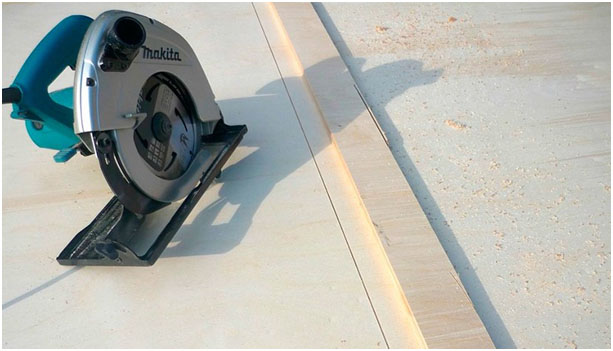 Using a guide when sawing with a circular saw will help to avoid unevenness
Using a guide when sawing with a circular saw will help to avoid unevenness
To effectively cut a sheet with a circular saw, you should adhere to the following rules:
- Place the plywood sheet on a stable support and make the first notch closer to the middle of the sheet.
- Adjust the cut in depth. To do this, lower the disc and start cutting, while the immersion depth of the disc should be 0.5 cm greater than the thickness of the blade.
- Position yourself to the side of the saw action line to avoid injury due to the high probability of kickback.
- Prepare the saw for making the required cut. To do this, attach the saw shoe (part of it in front) to the blade and install the blade on the cutting line, having first bend the cover.
- Make sure there is no interference at the bottom of the sheet.
- Switch on the saw and slowly immerse the blade in the material. Hold the saw firmly to prevent kickback. After plunging into the slot of the disc and installing its shoe on the surface of the sheet, return the protective casing back.
- Draw the tool along the line to the end of the web.
- Switch off the saw and only after it has come to a complete stop, remove it from the slot.
Electric jigsaw cutting
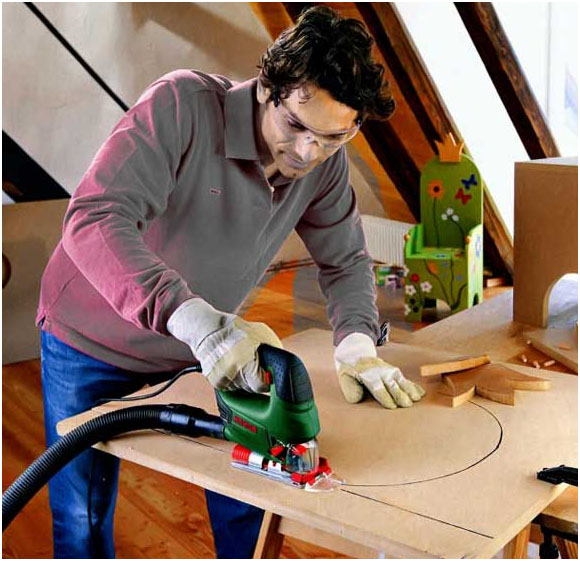 The jigsaw allows you to make high-quality curly cutouts
The jigsaw allows you to make high-quality curly cutouts
To obtain an even cut, the sequence of actions should be as follows:
- Fix the material securely.
- If possible, cut perpendicular to the grain of the wood, otherwise it will be very difficult to get an even edge.
- In no case should you put pressure on the tool, the cutting speed will not increase from this, but the tool is guaranteed to break.
- The surface of the teeth should be lubricated with oil to facilitate work (when working with heavy wood).
- It is undesirable to use the tool for a long time due to its heating and damage to the engine.
- After use, you need to clean the jigsaw and lubricate it.
Hand sawing
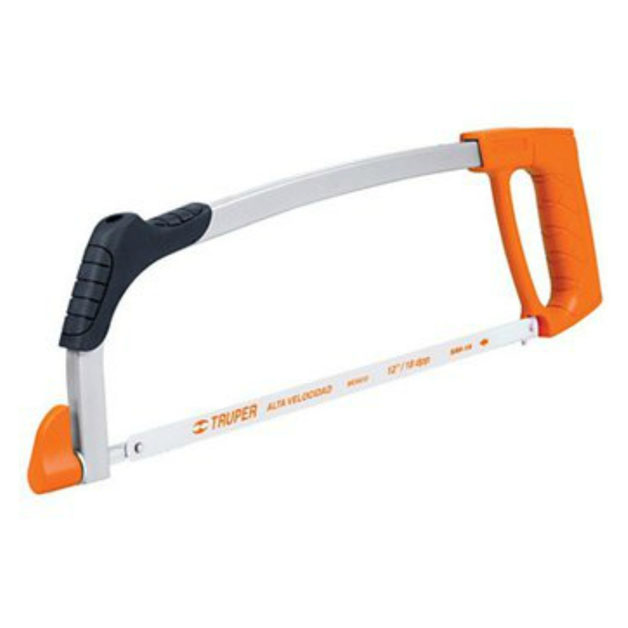 The metal saw works well with plywood
The metal saw works well with plywood
Working with a hand saw is much more labor intensive than a circular saw. To properly cut a sheet of plywood, you need to take into account the following rules:
- Make a vertical notch along the cutting line. To do this, you need to place the saw blade and stretch the blade to form a groove.
- Tilt the saw blade until an acute angle is formed with the plane of the sheet (from 30 to 40) and begin to make smooth movements.
- To maintain the evenness of the cut, the forearm and shoulder should be located in the same plane. If you deviate from the specified direction, you need to slightly bend the saw in the desired direction and continue working.
- To avoid the formation of a kink, you need to hold the sawn off part with your free hand.
- At the end of the cut, it is required to return the blade to a vertical position and finish the work by carrying out several movements perpendicular to the plywood sheet.
Instructions: how to cut straight with a jigsaw
It is absolutely indisputable that a tool such as a jigsaw is necessary for any carpentry workshop, and will also not be superfluous in a set of home tools. It is he who is most suitable for cutting out curly blanks of various types, both curved and straight.
But how to cut smoothly with a jigsaw? To do this, certain instructions must be followed.
First step
First you need to prepare the necessary tools:
- clamps;
- pencil;
- strip or bar for the guide;
- jigsaw;
- measuring tool.
Getting started, you should fix the workpiece as firmly as possible. Sawing with a jigsaw along the fiber is completely undesirable, because in this case it will not be possible to cut exactly.
But if there is still such a need, then here you can use a parallel stop, one end of which is attached to the jigsaw, and the other rests against the edge of the workpiece material.
In this way, it will be possible to saw off extremely smoothly.
If it is necessary to cut with a jigsaw in the inner part of the workpiece, you must first drill a hole in it. After that, a saw blade is inserted into the drilled hole, and the jigsaw is moved exactly along the marking line. At the end of the cut, you should correct the corners on each side of the workpiece.
Sawing should be done using a guide, which can be a straight bar or block. You will need several clamps, which should fit the workpiece and the guide. Saw exactly with a jigsaw
It is necessary to put something under the workpiece so as not to rest when working with a jigsaw. Further, using a measuring tool, the width of the section to be cut is measured.
Then a line is drawn along the ruler connecting the marks. After that, the guide is fastened with clamps at such a distance from the edge of the cut line, which is necessary.
Then the jigsaw is placed with the blade against the saw line. The guide is pressed against it and also fixed with a clamp.
You need to fix it still, but you should not pinch it too tightly. Further, everything is performed in the same form from the opposite side.
Further, turning on the jigsaw, you need to set the speed to the maximum, and adjust the movement of the pendulum by setting it to one.The jigsaw is installed with the blade against the cutting line, the platform is pressed sideways against the guide, and you can start sawing.
Second phase
In the process of working with the jigsaw, excessive pressing on the tool should be avoided. The device is gently pushed forward while also controlling the platform.
The edge of the sole should be pressed against the rail so that it does not move. At the end of the cut, when a couple of centimeters remain to the edge, it is necessary to hold the sawn-off fragment to avoid breaking.
In order to achieve a higher cutting accuracy when working with a jigsaw, and to cut more evenly parts of small sizes, the use of a sawing table will serve as an auxiliary method.
As a result of this cut, the lines come out more evenly. How to cut straight with a jigsaw?
To improve the quality of movement of the saw on the workpiece, you can use an auxiliary device in the form of a replaceable plate, which can be made of materials of various nature. The plate is attached to the main support platform of the jigsaw. The adapter and guide bar allow you to cut more evenly.
When sawing some materials with a jigsaw, there is a need to cool them. Therefore, before you start cutting, you need to install a container with cold liquid on the support platform, specially designed for this.
Before cutting the metal, the file must be lubricated with machine oil, and the place of the cutting line must be cooled.
It is recommended to cut a curved shape using saws with a narrow blade. When cutting a round part, a special circular cutter is used, which is installed in the center of the circle.
That's all a simple description of how to cut smoothly with a jigsaw.
Work rules
With a jigsaw, you can complete both ordinary construction tasks and saw out a variety of decorative figures and patterns. For beginners, there are the following simple tips to get the job done as efficiently as possible:
- starting to cut, you will have to create an emphasis in the lower back; this position makes it possible to both hold the canvas, and work while sitting, and even do it while standing;
- when you need to cut a small fragment, first a small hole is made in the workpiece with another tool, and then a jigsaw file is inserted there; by the way, to make a hole in the plywood, it is enough to sew;
- work correctly with a jigsaw slowly and measuredly, without haste; this is especially true for complex graceful drawings, so for beginners, by the way, it is better to start with geometric shapes and simple outlines on a cutting board;
- changing the cutting angle, it is necessary to unfold the working panel, and an unused file;
- the work ends with the obligatory processing of all irregularities and roughness;
- using a jigsaw, you can not only cut out various patterns on a straight surface, but also, for example, make a medal, a box or a photo frame; diagrams for all these objects and images are extensively presented on the Internet.
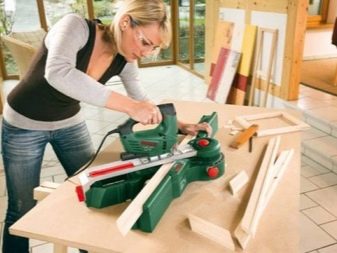
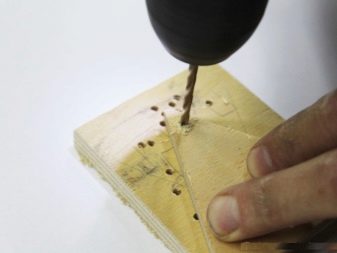
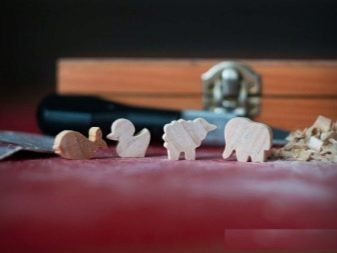
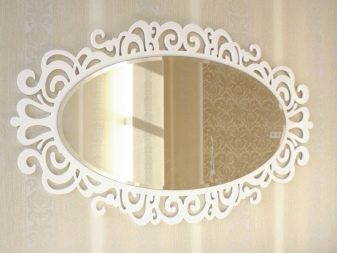
Jigsaw carving is carried out with such specifications as:
when working, do not put pressure on the saw blade - it will heat up faster and more strongly and, as a result, even break;
a wide file will allow you to create a long, straight cut, since the width of the cutting blade will balance the position of the jigsaw;
when working with the device, it is important to periodically change the saw;
cutting with a blunt blade will only spoil the material, and, moreover, will increase the load on the motor, and also worsen the quantity and quality of work;
cutting on metals and plexiglass requires preliminary treatment of the processed material with water or liquid oil for a car; such an action will not only ensure a clean cut, but also keep the cutting blade itself in a satisfactory condition;
if you need to cut metal with a thickness of less than 1 millimeter, you will additionally have to put a piece of plywood under it, and also reduce the feed so as not to create vibrations;
It is important to allow the device to rest periodically, especially in the case of a minimum frequency of strokes;
The jigsaw should be periodically cleaned and oiled with a special tool.
Products, as a rule, are created according to drawings, which are printed on thick cardboard, cut along the contour and transferred to a plywood blank. In this case, the contour should be applied from the inside and with a simple pencil so that there is an opportunity to carry out the correction. Experts recommend placing the pattern in such a way that you have to cut along the grain to a minimum. The first step is to work out the internal contours. To do this, simply guide the jigsaw over the fixed panel.


Sometimes it is impossible to cut exactly, because either the jigsaw turned out to be tilted, or the fasteners and the tension of the saw were weakened. This can be prevented by pre-setting the hardware and tightening all the fasteners. When the file is already stuck, you need to carefully remove it and start applying the pattern again, following parallel to the damaged line. Sawing without chips will work if you choose high-quality material, and also observe the following rules:
- processing of low-quality plywood should be carried out as intensively as possible using saws equipped with small teeth; in addition, a cutting blade with a reverse tooth will come to the rescue;
- on the reverse side, it is worth glueing the cutting lines with tape or duct tape, and also moisten the surface;
- before you start creating fantasy patterns, you need to work out the basic ones;
- to make an inner circle, you will first have to drill a small hole, the diameter of which will allow you to place the file inside; the movement of the cut will have to go along the inner contour of the image with a course of medium intensity;
- obtuse and right angles are formed by turning the material to be processed, combined with the smooth movement of the jigsaw;
- sharp corners are obtained from two cuts brought together at one point;
- an oval contour is also obtained when unfolding the plywood;
- work always starts from the center and then moves to the edges of the workpiece.


Features of working with a jigsaw
In terms of structure, a jigsaw is very different from its tame relative. The file is fixed only on one side, so it is several times thicker than the manual file, instead of a thin holder arc, there is a massive body with an electric motor and a gearbox.
An electric jigsaw provides many times more productivity than a manual jigsaw for sawing, the price paid for this is high weight, strong vibration and reduced cutting accuracy when performing curved cuts.
The unit allows you to quickly cut in a straight or curved line with large radii.
The best result for artistic cutting with a jigsaw is a combination of a hand and an electric document. Particularly fine details of the design and rounding of a small radius, of course, must be entrusted to a hand jigsaw.
An ordinary household or professional jigsaw is not very suitable for cutting. Its purpose is construction work, and cutting complex patterns with a jigsaw will lead to rapid fatigue due to its large weight and to damage to the material.
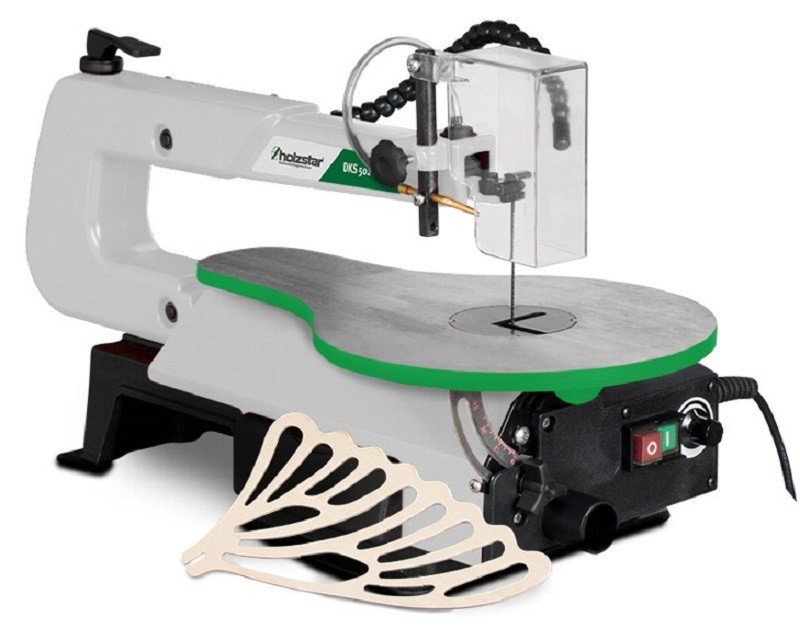
Band jigsaw
However, there are also band jigsaws - in them the blade is clamped on both sides, the material rests on a massive wide working table and the arc of the holder from the hand jigsaw is visible in the structure. With such a semi-professional device, you can achieve even greater cutting accuracy than a hand tool. But this miracle unit is worth, respectively.
Material base
What do we cut out of?
If the goal of our work is to create an object with high aesthetic characteristics (and this is the case in most cases), then it is necessary to start with the choice of material.
Plywood for cutting with a jigsaw must meet a number of requirements:
First, you should select the optimal sheet thickness. If we cut out a figured piece of furniture from plywood with our own hands, then we can use panels with a thickness of 12-15 mm, and even thicker ones. If our goal is more delicate work, then, accordingly, we need to purchase material of 5 mm or even less.
 Different thicknesses for different applications
Different thicknesses for different applications
- The color of the veneer from which the plywood is made plays a role only if we do not plan to carry out the finishing treatment of the finished product with stain, varnish or paint. But most often they do not pay attention to the color - it will not be visible anyway!
- The moisture content of the material is critical for jigsaw cutting. Plywood sheets must be thoroughly dried, otherwise our main occupation will be the replacement of saws.
As for the quality, only plywood of the first or second grade is suitable for artistic cutting:
- There should be no knots or spots on the sheet.
- There should be no resin pockets inside the slab.
- Select only those panels for which the veneer is glued with sufficient quality.
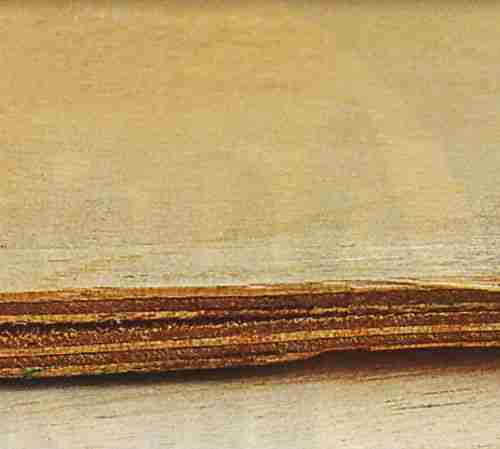 Veneer layering
Veneer layering
How do we work?
So, we figured out the material. Now let's focus on the inventory that will help us make furniture and plywood figurines.
Of course, the jigsaw itself will take a place at the head of our list.
The choice of a tool model depends primarily on the goals and objectives that you set for yourself:
Fine work, such as decorative sawing on plywood to decorate frames, boxes, etc., is done exclusively with a hand jigsaw. The frame of the instrument can be either metal or wooden - this does not have a special effect on the final result. (see also the article DIY plywood box - detailed manufacturing guide)
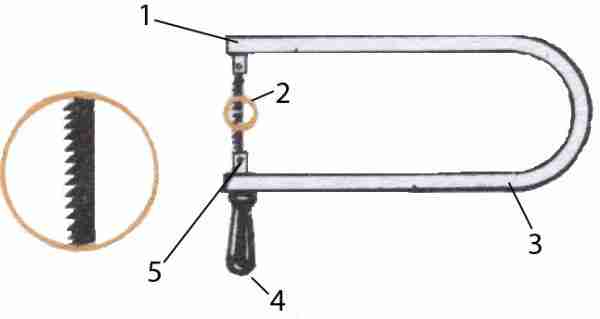 Manual jigsaw with correctly positioned saw blade
Manual jigsaw with correctly positioned saw blade
A regular jigsaw is used only for rather "rough" work, such as making furniture and large accessories. This is due to the fact that at a high speed of the saw, chips are inevitably formed on the end part of the plywood, and therefore it is almost impossible to work with thin material.
 Such a tool is only suitable for rough work.
Such a tool is only suitable for rough work.
- When choosing a jigsaw for artistic cutting, it should be remembered that the price of the product is directly proportional to the quality of the cutting line. The thing is that in inexpensive models, literally after a couple of months of active use, the blade begins to "walk" in the horizontal plane, and the sawing accuracy drops. (see also the article Sawing out of plywood with a jigsaw: drawings and technology)
- A separate category is electric jigsaws with a band saw, which can be used for artwork as well. These devices are small machines in which the workpiece is located on a special site.
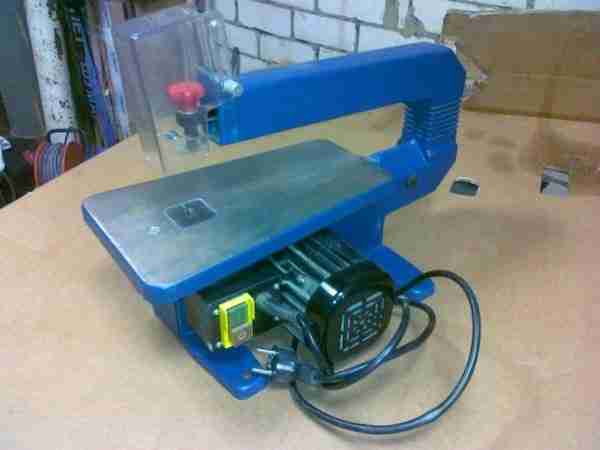 Band saw machine
Band saw machine
In addition to the jigsaw itself (and preferably two: electric and manual), we will need:
Plywood saws. The larger the stock, the better, since the file is literally "consumable".
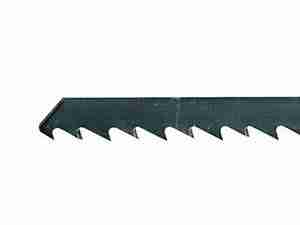 Photo of an enlarged jigsaw file
Photo of an enlarged jigsaw file
- A drill with a set of drills for wood (below we will tell you how it can be useful for mothers).
- A set of files for smoothing edges. It is advisable to choose files of different shapes: at least straight, semicircular and triangular should be required.
- Hand tools - hammer, chisels, pliers, etc. Used for assembling sawn parts.
- Awl and pencil for transferring drawings to plywood.
It is best to work on a special workbench equipped with a ledge for placing the workpiece for cutting.If there is no workbench, you can adapt a regular table for work by fixing a special sawing platform on it.
The platform is a wooden or plastic bar with a specially shaped hole, which is attached to the table top with a clamp.

